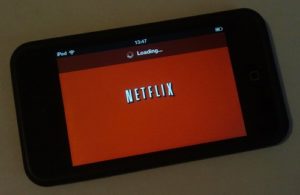
Bandwidth and data refers to the speed and capacity capability of the network you are connected to or your service plan. Phone calls use a relatively small amount of bandwidth. Streaming video and emailing large attachments demand a lot more. Your phone company sells data plans based on monthly allotments measured in gigabytes (GB) or megabytes (MB). One thousand MB approximately equals one GB.
WiFi or 3G/4G?
Pretty much every smartphone you buy now is going to have both WiFi and mobile network capability. “3G” or “4G”, depending on the company you sign up with, refers to the carrier’s mobile network and works just about anywhere in the vicinity of modern human population. 3G is being replaced by 4G on all the major phone networks and is basically similar but faster. The terminology and technology such as LTE, HSPA+, and WiMax, will vary between the major players but for your purposes they all do the same thing and the performance varies more as a function of your location and phone rather than the network. Phone calls and data such as web, email, downloads, Netflix, etc will work over these mobile networks. Often tablets, eReaders, and even home and automobile security systems will allow an optional ability to connect to these networks as well for an additional cost.
WiFi, on the other hand, is different. WiFi refers to the wireless internet connection you use to connect your laptop computer to your home or workplace internet. It is also used to connect many other devices such as tablets, printers, and televisions. Pretty much all modern phones now also possess the ability to connect to a WiFi network and most will do so automatically when properly set up. We spend about ninety percent of our day within range of a usable WiFi network such as your home, workplace, coffee shop, and even on board some airlines. Depending on the location, WiFi will generally be as fast as or faster than your phone carrier’s network and most importantly, outside their jurisdiction of control meaning they can’t bill you for using it.
The dilemma the mobile phone companies have is this: The more advanced and faster the mobile devices become, and the more software that demands more data usage (such as Netflix), the greater the strain on their ability to deliver the high speed data to their customers that they promised. In other words, we can’t all watch Netflix at the same time or the speed drops and the video stops loading. The phone companies are struggling to handle this problem and are addressing it in ways that may affect your data hungry customer experience.
When you sign up for a data plan, it’s important to understand what it means and how much do you need. Most people won’t need an expensive unlimited plan but most people also have no idea how much they actually do need. Unfortunately with these new and faster high speed networks we have seen an end to cheap unlimited data plans. When the phones and network were slower and data hungry apps were rare, it was easy for the phone companies to offer unlimited data because they knew you couldn’t use a whole lot even if you tried. Now with multi core processor phones possessing high definition screens and data hungry apps like YouTube and Netflix pulling data through high speed 4G networks the phone companies realize there just isn’t enough bandwidth to spread around.
Basic data plans can be 2GB, 5GB, 10GB, or even a low use plan such as only 200MB. You can usually monitor your monthly use online or directly from your phone to keep track of how much you use and how much you need. Most companies won’t cut you off if you exceed your monthly allotment but they will either severely degrade your performance through the end of the billing cycle or begin charging you extra. This is an important question to ask when you purchase a phone and a service plan. Keep in mind you can always upgrade your plan but it may not always be possible to downgrade if you are in contract. Again, data usage while you are connected to a WiFi will not be counted against your monthly plan.
- Email and texting with only occasional small attachments use very little, maybe a hundred megabytes per month.
- 30 websites visits every day uses less than 1 GB per month.
- One hour of streaming music per day will use about 1.76 GB each month.
- Two hours of streaming video can consume about 1.3 GB, so don’t watch a full length movie more than about once or twice a month depending on your plan.
- Streaming high def video can use about 4GB per movie and will easily push you past your monthly limit immediately.
Clearly if you expect to watch a lot of Netflix over your mobile carrier’s network you can expect to pay through the nose for that kind of service. The best bet is to make sure you are connected to WiFi and not the carrier network before using your phone to watch video.
“With great power comes…”, well, you get the idea. Understanding how your phone consumes data and how you can monitor it will not only save you money but increase your enjoyment. Keep an eye on how much data you consume each month and adjust your data plan accordingly. Next time you think your phone is broken because it’s taking forever to load your favorite website check your data use history and see if you’ve already used up your monthly quota.